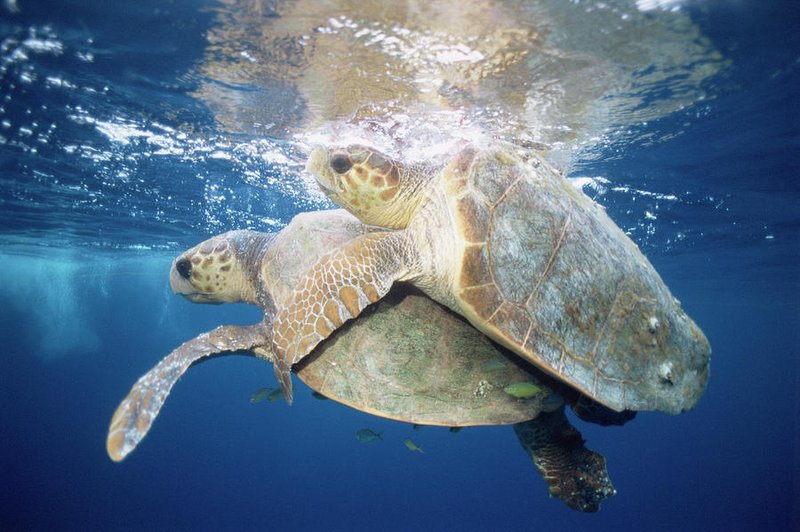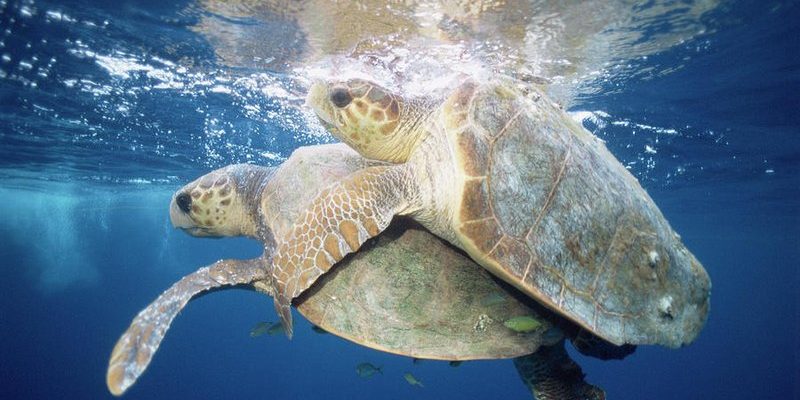
Imagine a bustling tropical beach, waves lapping gently at the shore. Hawksbill turtles return here, like old friends, to nest. They are known for their unique behaviors that not only contribute to their survival but also reflect the delicate balance of ocean ecosystems. Let’s dive into the intriguing world of how these turtles mate, nest, and care for their young.
Understanding Hawksbill Turtle Mating Habits
Hawksbill turtles have a remarkably unique mating ritual. They tend to mate in shallow waters near the coast, where males and females can easily find each other. During the mating season, which can last from spring to fall, males actively search for females, often competing with other males. This results in a series of brief but intense encounters, filled with displays of dominance and courtship.
During mating, males use their elongated claws to hold on to the female’s shell. This isn’t just for grip; it’s a way for the male to show he’s the best mate around. You might want to picture a dance where both partners swirl around, but with a lot more determination and a touch of instinct. It’s a wild and pivotal moment that sets the stage for the next phase in their lives.
After successful mating, fertilization occurs internally, leading to the female carrying eggs for about two months. Here’s the thing: hawksbill turtles are known for their ability to store sperm, allowing them to fertilize multiple clutches over a breeding season. This means that a single mating encounter can lead to several nests of eggs, increasing the chances of offspring survival.
Nesting Process of Hawksbill Turtles
Once the female is ready to lay her eggs, she returns to a sandy beach, often the same one where she hatched years before. This phenomenon, known as nest site fidelity, is fascinating. It’s like they have a built-in GPS guiding them back home.
The nesting typically occurs at night to avoid predators and the heat of the day. When she arrives at her chosen spot, the female digs a nest about two feet deep, using her flippers to push the sand aside. This act can take a lot of energy. It’s a significant moment filled with determination, as she knows that the future of her species depends on this act.
Once the nest is ready, she lays anywhere from 100 to 200 eggs, which are about the size of a ping-pong ball. After laying her eggs, she covers them with sand and returns to the ocean, leaving the eggs to incubate on their own. Honestly, it’s a bit heartbreaking when you realize she won’t see them again. The eggs will take about 60 days to hatch, and during this time, the beach environment plays a crucial role in determining the sex of the hatchlings.
The Journey of Hawksbill Hatchlings
When the hawksbill eggs finally hatch, the tiny turtles face their first major challenge: making their way to the ocean. This is no easy task! The hatchlings rely on instinct and the reflection of the moonlight on the water to guide them. Sadly, many won’t make it. Predators, like birds and crabs, are lurking, ready for an easy meal.
You might be wondering how many hatchlings survive this perilous journey. Estimates suggest that only about 1 in 1,000 hatchlings will reach adulthood. The odds are stacked against them right from the start, making their survival a remarkable feat.
For the lucky few who make it to the ocean, the journey has just begun. They will spend the next several years growing and maturing in the open sea, a stage known as the pelagic phase. This time is critical for their development and eventual return to coastal waters as mature adults.
Threats to Hawksbill Turtle Reproduction
Despite their resilience, hawksbill turtles face numerous threats that can impact their breeding and reproductive success. Habitat loss, pollution, and climate change are just a few of the challenges they encounter. The loss of nesting beaches due to coastal development or rising sea levels can make it difficult for females to find suitable places to lay their eggs.
Additionally, artificial light from beachfront properties can confuse hatchlings, leading them away from the ocean. Imagine a tiny turtle, instinctively heading toward the bright lights instead of the safe water. It’s a heartbreaking scenario that contributes to their struggle for survival.
Overfishing and illegal trade of their shells also threaten this species. Hawksbill shells are often sought after for their beautiful patterns. Unfortunately, this has led to severe declines in their population, making conservation efforts even more critical.
Conservation Efforts for Hawksbill Turtles
Many organizations around the world are dedicated to protecting hawksbill turtles and their habitats. Conservation programs focus on several key areas, such as nest protection initiatives, public education, and habitat restoration. These efforts aim to create safer environments for these turtles to reproduce and thrive.
For instance, some projects involve monitoring nesting sites during the breeding season to safeguard the eggs from predators and poachers. Volunteers often help mark nests and relocate them if necessary to ensure the hatchlings have a fighting chance.
Another crucial aspect of conservation is promoting sustainable fishing practices to protect hawksbills from bycatch. This means using fishing methods that minimize capturing turtles accidentally, which can significantly reduce their mortality rates. By addressing these threats, we can help secure a brighter future for hawksbill turtles.
The Future of Hawksbill Turtle Reproduction
The future of hawksbill turtle reproduction is a mixed bag of challenges and hope. While they face significant threats, the ongoing conservation efforts provide a glimmer of optimism. With increased awareness and collective action, there’s potential for these turtles to rebound and thrive once more.
As we learn more about their breeding habits and challenges, it’s essential to share this knowledge. Understanding the intricate lives of hawksbill turtles can inspire us to take steps, big and small, to protect them. Whether it’s reducing plastic waste, supporting conservation groups, or participating in beach clean-ups, every action counts.
In conclusion, the breeding and reproduction of the hawksbill turtle is a captivating journey filled with obstacles, resilience, and hope. By nurturing the knowledge we have and supporting conservation efforts, we can play a part in ensuring that these magnificent creatures continue to grace our oceans for generations to come.

